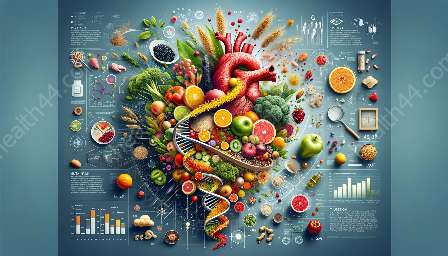When it comes to cancer prevention and treatment, researchers and health professionals are looking beyond traditional therapies to explore the potential of bioactive compounds in food. These compounds, found in a variety of fruits, vegetables, and other natural sources, have been the subject of numerous studies for their potential role in reducing cancer risk and supporting treatment.
Bioactive Compounds and Cancer Prevention
1. Phytochemicals: Phytochemicals are natural plant compounds that have been shown to have anticancer properties. These include flavonoids, carotenoids, and polyphenols, which are found in a wide range of fruits, vegetables, and legumes.
2. Antioxidants: Antioxidants such as vitamins A, C, and E, as well as selenium and zinc, can help protect cells from damage caused by free radicals. Consuming a diet rich in antioxidants can potentially reduce the risk of cancer development.
3. Fiber: High-fiber foods, such as whole grains, fruits, and vegetables, not only support digestive health but also play a role in reducing the risk of colorectal cancer. Fiber can help remove carcinogens from the body and aid in the prevention of cancerous cell growth.
Nutrition and Cancer Treatment
The impact of nutrition on cancer treatment is an area of growing interest. While bioactive compounds in food cannot replace traditional cancer treatments, they may complement these treatments and support overall health during the treatment process.
1. Anti-inflammatory properties: Many bioactive compounds demonstrate anti-inflammatory effects, which can be beneficial for cancer patients experiencing inflammation as a result of the disease or treatment.
2. Immune support: Certain bioactive compounds, such as those found in mushrooms and garlic, have been studied for their potential to support immune function, which is crucial for cancer patients undergoing treatment.
3. Reduction of treatment side effects: Some bioactive compounds may help alleviate treatment side effects, such as nausea and fatigue, contributing to a better quality of life for cancer patients.
Integrating Bioactive Compounds into the Diet
For individuals interested in harnessing the potential benefits of bioactive compounds for cancer prevention and treatment, making strategic dietary choices is essential.
1. Colorful fruits and vegetables: Consuming a variety of colorful fruits and vegetables ensures a diverse intake of phytochemicals and antioxidants, providing a broad spectrum of potential health benefits.
2. Whole grains and legumes: Opting for whole grains and legumes as sources of fiber and other bioactive compounds can contribute to a cancer-preventive diet.
3. Herbs and spices: Many herbs and spices, such as turmeric, ginger, and cinnamon, contain bioactive compounds with demonstrated health-promoting properties. Incorporating these into cooking can add both flavor and potential health benefits to meals.
Conclusion
Exploring the role of bioactive compounds in food for cancer prevention and treatment is an exciting area of research within the field of nutrition. While the potential benefits are promising, it's important to continue studying and understanding how these compounds can be effectively utilized to support overall health and well-being, especially for those impacted by cancer.


